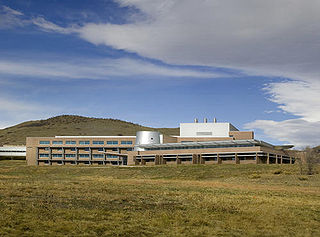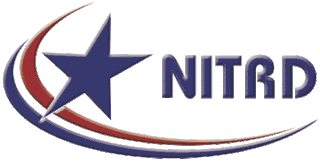Innovation in its modern meaning is a "new idea, creative thoughts, new imaginations in form of device or method". Innovation is often also viewed as the application of better solutions that meet new requirements, unarticulated needs, or existing market needs. Such innovation takes place through the provision of more-effective products, processes, services, technologies, or business models that are made available to markets, governments and society. An innovation is something original and more effective and, as a consequence, new, that "breaks into" the market or society. Innovation is related to, but not the same as, invention, as innovation is more apt to involve the practical implementation of an invention to make a meaningful impact in the market or society, and not all innovations require an invention. Innovation often manifests itself via the engineering process, when the problem being solved is of a technical or scientific nature. The opposite of innovation is exnovation.
Forfás was the national policy advisory board for enterprise, trade, science, technology and innovation in Ireland. The agency was established in January 1994 under the Industrial Development Act, 1993 and was run by a board appointed by the Minister for Jobs, Enterprise and Innovation, to whom the agency is responsible. Forfás was dissolved on 1 August 2014 and its functions were transferred to the Department of Jobs, Enterprise and Innovation, Enterprise Ireland, the Industrial Development Authority and the Health and Safety Authority.

The National Energy Technology Laboratory (NETL) is a U.S. national laboratory under the Department of Energy Office of Fossil Energy. NETL focuses on applied research for the clean production and use of domestic energy resources. NETL performs research and development on the supply, efficiency, and environmental constraints of producing and using fossil energy resources, while maintaining their affordability.

The National Renewable Energy Laboratory (NREL), located in Golden, Colorado, specializes in renewable energy and energy efficiency research and development. NREL is a government-owned, contractor-operated facility, and is funded through the United States Department of Energy. This arrangement allows a private entity to operate the lab on behalf of the federal government. NREL receives funding from Congress to be applied toward research and development projects. NREL also performs research on photovoltaics (PV) under the National Center for Photovoltaics. NREL has a number of PV research capabilities including research and development, testing, and deployment. NREL's campus houses several facilities dedicated to PV research.
The VDE e. V. is one of Europe’s largest technical-scientific associations with 36,000 members, including 1,300 corporate and institutional members and 8,000 students.
The Small Business Innovation Research program is a United States Government program, coordinated by the Small Business Administration, intended to help certain small businesses conduct research and development (R&D). Funding takes the form of contracts or grants. The recipient projects must have the potential for commercialization and must meet specific U.S. government R&D needs.

The Center for Information Technology (CIT) is one of the 27 institutes and centers that compose the National Institutes of Health (NIH), an agency of the U.S. Department of Health and Human Services (HHS), a cabinet-level department of the Executive Branch of the United States Federal Government. Originating in 1954 as a central processing facility in the NIH Office of the Director, the Division of Computer Research and Technology was established in 1964, merging in 1998 with the NIH Office of the CIO and the NIH Office of Research Services Telecommunications Branch to form a new organization, the CIT.
The Institute for Telecommunication Sciences (ITS) performs the research and engineering that enables the U.S. Government, national and international standards organizations, and many aspects of private industry to manage the radio spectrum and ensure that innovative, new technologies are recognized and effective.
The Science Subcommittee on Space and Aeronautics is one of six subcommittees of the United States House Committee on Science and Technology.
The Science Subcommittee on Energy is one of six subcommittees of the United States House Committee on Science, Space and Technology.
The Science Subcommittee on Research and Technology is one of six subcommittees of the United States House Committee on Science, Space, and Technology.
The Association of Technology, Management and Applied Engineering (ATMAE) sets standards for academic program accreditation, personal certification and professional development for educators and industry professionals involved in integrating technology, leadership and design. Its primary mission is faculty, students and industry professionals dedicated to solving complex technological problems and developing the competitive technologist and applied engineering workforce.
The New York State Energy Research and Development Authority (NYSERDA), established in 1975, is a New York State public-benefit corporation, located in Albany, New York, with regional offices in New York City, Buffalo, and West Valley.
CENDI is an interagency group of senior Scientific and Technical Information (STI) managers from 14 United States federal agencies. CENDI managers cooperate by exchanging information and ideas, collaborating to address common issues, and undertaking joint initiatives. CENDI's accomplishments range from impacting federal information policy to educating a broad spectrum of stakeholders on all aspects of federal STI systems, including its value to research and the taxpayer, and to operational improvements in agency and interagency STI operations.
The America Creating Opportunities to Meaningfully Promote Excellence in Technology, Education, and Science Act of 2007 or America COMPETES Act was authored by Bart Gordon and signed by President George W. Bush; it became law on 9 August 2007. This was an Act, "To invest in innovation through research and development, and to improve the competitiveness of the United States."
Title 51 of the United States Code, entitled National and Commercial Space Programs, is the compilation of the general laws regarding space programs. It was promulgated by U.S. President Barack Obama on December 18, 2010 when he signed PL 111-314 into law.

The principle of a fuel cell was discovered by Christian Friedrich Schönbein in 1838, and the first fuel cell was constructed by Sir William Robert Grove in 1839. The fuel cells made at this time were most similar to today's phosphoric acid fuel cells. Most hydrogen fuel cells today are of the proton exchange membrane (PEM) type. A PEM converts the chemical energy released during the electrochemical reaction of hydrogen and oxygen into electrical energy. The Energy Policy Act of 1992 was the first national legislation that called for large-scale hydrogen research. A five-year program was conducted that investigated the production of hydrogen from renewable energy sources and the feasibility of existing natural gas pipelines to carry hydrogen. It also called for the research into hydrogen storage systems for electric vehicles and the development of fuel cells suitable to power an electric motor vehicle.

The Networking and Information Technology Research and Development (NITRD) program consists of a group of U.S. federal agencies to research and develop information technology (IT) capabilities to empower Federal missions; support U.S. science, engineering, and technology leadership; and bolster U.S. economic competitiveness.
The Indonesian Standardization Body is the International Organization for Standardization (ISO) member body for Indonesia.








